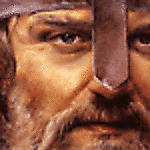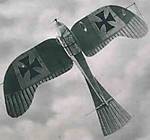Quoted Text
Ill probably be criticized for saying this , but here goes. When I was building bi-planes and older military ships, I would use different thicknesses of floral wire cut to size. They tended to be easier to work with than the rigging sometimes supplied by the kit maker
In this case one must becareful and not use white wire in any resin components. Plastic is fine but white metal in resin often corrodes. Always use brass rod or wire and you never have that problem.
From the Aeroscale thread - Modeling Spruce & Linen.
". . .First of all leave the top wing upper surface and the lower wing under surface unfinished. Why you ask? These are the areas that you need to apply glue to. An open flat surface is easier to work with than the narrow area between the wings.
Drill straight through the wing next to the strut at the appropriate angle. There should be two holes for each strand. Note also that one hole can possibly hold upto 5 strands. The key to working with monofilament is start by the upper cabane strut locations and move out and down with your strands. Used spring action clothes pins to clip on the strands once their through the lower wing area. One clothes pin for one strand. This pulls the strand(s) tight and then you just put one drop of thin type super glue in the hole. Donít use metal hemostats as they can over stress the small 5-8 mil strands and after your complete it will go slack and heat application wonít tighten it permanently.
When your finished rigging use a sharp #11 blade and clip all ends of the secured strands. Then scrap any glue spots off the plastic and finish to suite your chosen profile.
The other choice is ( I prefer blackened brass) fine wire. For 1/48 and smaller try .006-.008. For larger scales try .015-.020 and up. Brass is best choice for short runs of 1Ĺ and smaller. Brass has weight and will tend to sag over a period of time if not thoroughly anchored. Turnbuckles can be manufactured in scale, it just take patience. In smaller scales you can simply replicate turnbuckles with an application of thicker gel super glue then paint when dry. . ."
See it
here. 




















